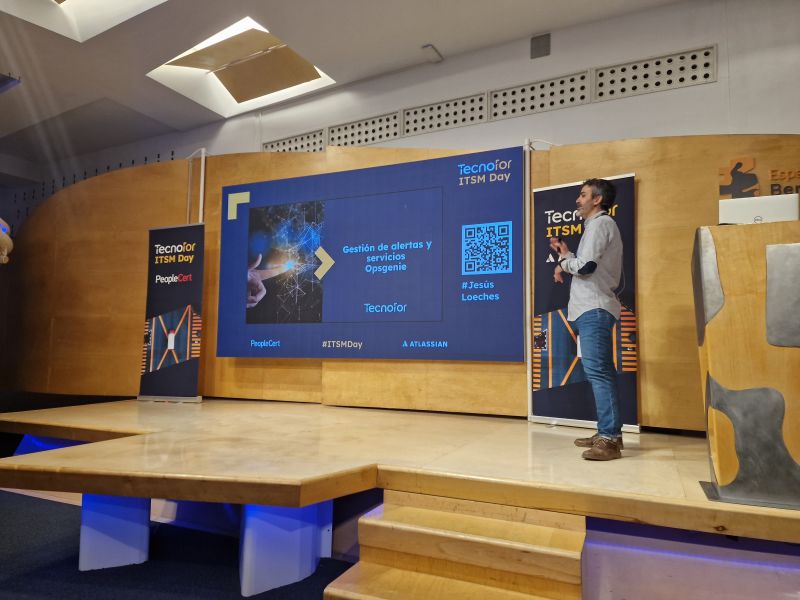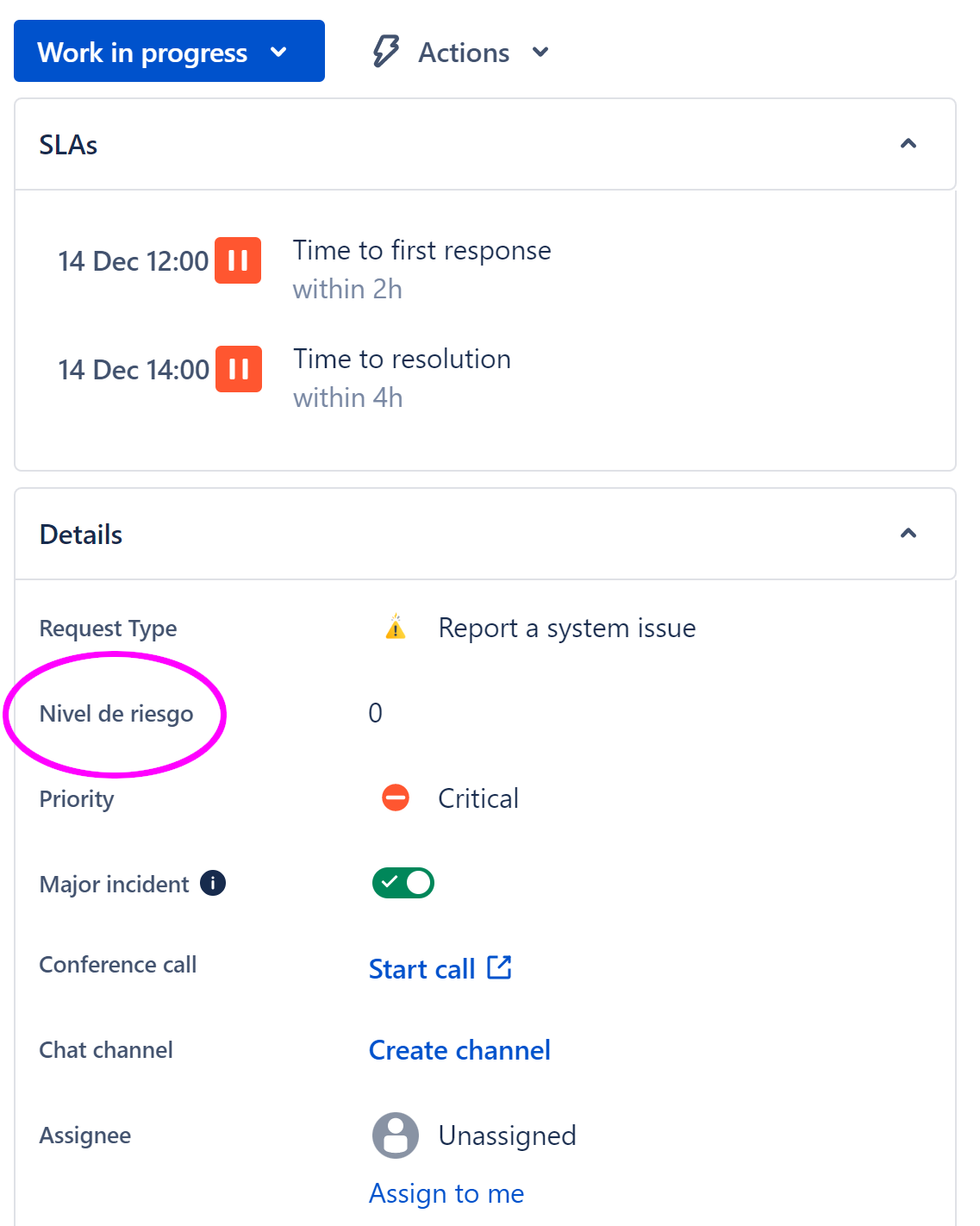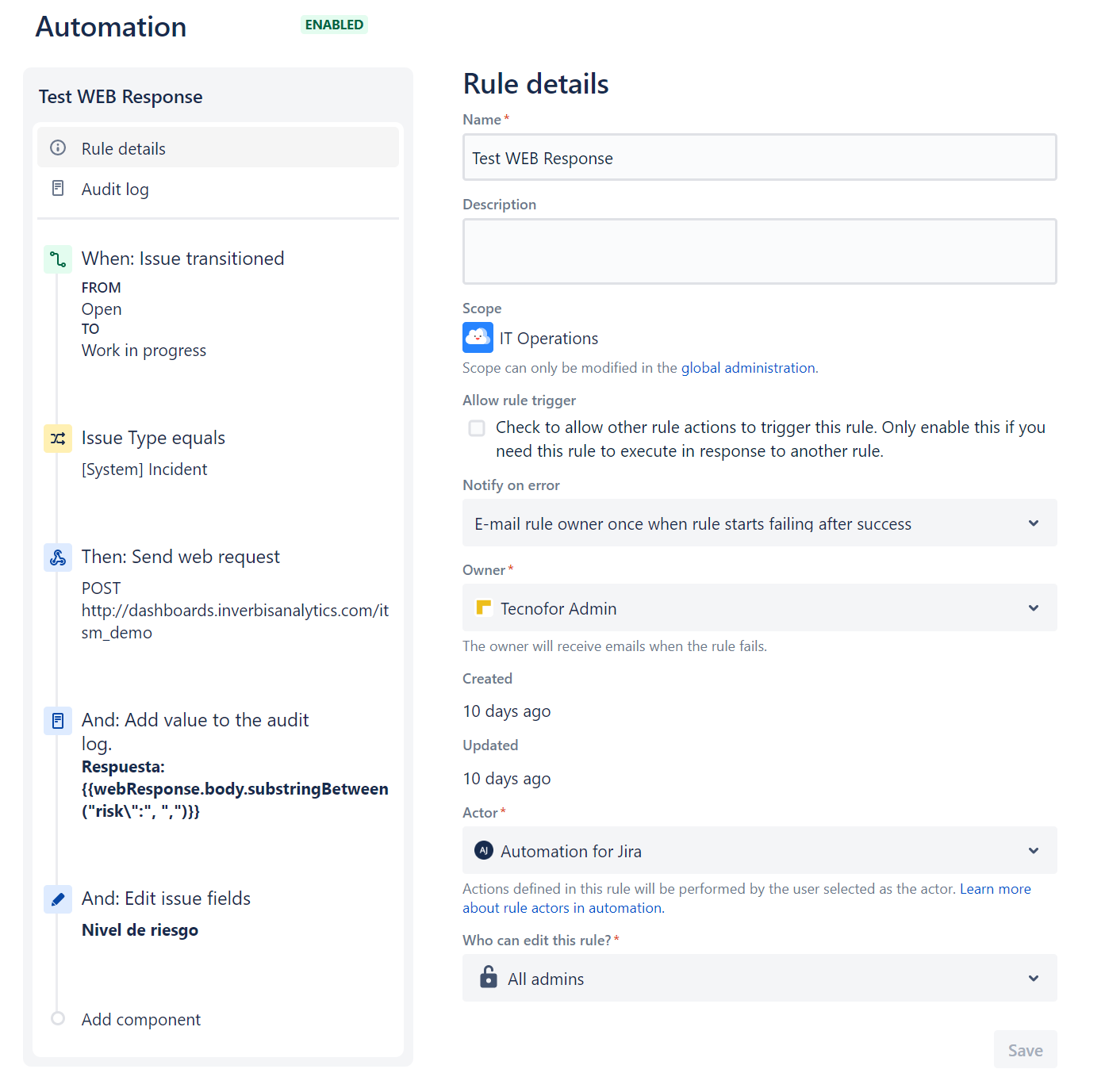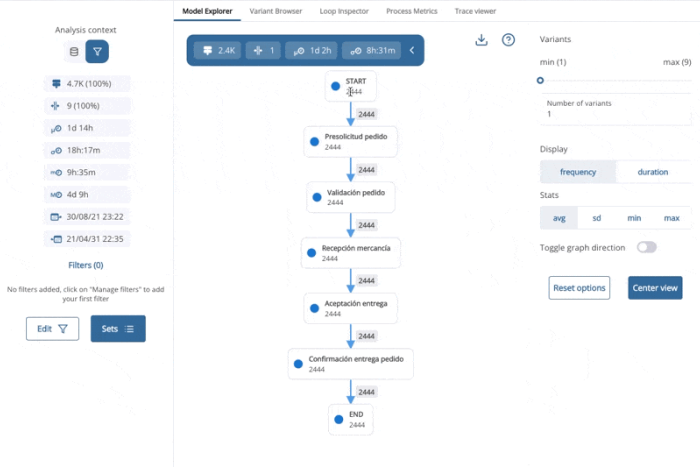RiskPredictor: predictions and automations for your IT processes
Applying intelligence to IT operations is one of our objectives, which is why we continue to develop our vision of Process Intelligence. In this case, we are working to enable our customers to move towards optimising the performance of the teams that support IT processes.
 The first version of RiskPredictor For Jira, which aims to implement a predictive model for IT operations, was presented a few days ago.
The first version of RiskPredictor For Jira, which aims to implement a predictive model for IT operations, was presented a few days ago.
Our solution provides agents the intuition of senior experts, making it available to everyone. It also enables the implementation of automated actions on workflows to speed up response times and anticipate problems.
Attendees at TecnoFor’s #ITSMDay 2023 event were able to witness a live demonstration of the solution. By initiating a massive incident and setting it to “in progress”, an instant rule is triggered that performs a prediction to assess the probability of meeting the SLA (Service Level Agreement).
Within seconds, the agent gains valuable new information about the level of risk associated with meeting or not meeting the SLA. This is achieved by combining information from the current incident with historical data from similar cases to identify patterns of behaviour using learning algorithms.
 With access to more information, organisations can improve their responsiveness to users and activate new intelligent rules that incorporate expert experience, guiding agents to be proactive and more efficient responses for the organisation.
With access to more information, organisations can improve their responsiveness to users and activate new intelligent rules that incorporate expert experience, guiding agents to be proactive and more efficient responses for the organisation.
The additional information gathered about the tickets will allow organisations to know things like the estimated resolution time, meeting commitment dates, maintaining the path or variant, and many other predictions that will help you anticipate your actions.
Agents will have many more tools at their disposal and will be more motivated to respond and anticipate.
But we can do even more. By integrating prediction into the Atlassian platform, we can orchestrate new business rules with Atlassian automation from minute zero and with minimal code.
 This will enable not only the prediction of behaviour, but also the implementation of personalised actions based on rules. How? For example, escalating the issue, alerting related groups, changing the priority, notifying an expert group, and many other possibilities.
This will enable not only the prediction of behaviour, but also the implementation of personalised actions based on rules. How? For example, escalating the issue, alerting related groups, changing the priority, notifying an expert group, and many other possibilities.
These rules do not necessarily have to change the design of the process flow, but they will certainly speed it up. These rules can be 100% automatic or require agent intervention.
In the case of the massive incident presented at TecnoFor #ITSMDay, it was predicted that the SLA would not be met. Based on the results obtained, a rule can be launched within seconds to change the priority to HIGH and involve the Level 2 expert group for that service.
These actions are taken immediately, reducing doubt and delay and ensuring that the ticket moves through the process as if it were always in the hands of an expert.
We use a predictive model based on ML (machine learning), built on process mining analysis developed at Inverbis Analytics, focusing on service management processes (incident flows, requests, changes, etc.). It is necessary to identify the purpose of the prediction (e.g., risk of SLA breach) and to have data for learning.
 Historical data is a valuable asset that will train intelligent algorithms and allow us to have an ML model that can predict behaviour. Now we can archive closed tickets, freeing up space and improving performance.
Historical data is a valuable asset that will train intelligent algorithms and allow us to have an ML model that can predict behaviour. Now we can archive closed tickets, freeing up space and improving performance.
Currently, the implementation of predictive models is mainly focused on creating dashboards, which are useful, but require continuous attention from the user. What happens with this approach when you have hundreds of tickets? It creates bottlenecks in decision making and distribution of actions to teams.
With RiskPredictor For Jira, we have gone a step further by integrating these predictions directly into each ticket, directly into the process. It also allows to move towards a new approach of predictive monitoring integrated into operations.
At TecnoFor, we continue to work on incorporating predictive templates and defining a library of rules that can be applied to processes to help customers simplify adoption and optimise operational efficiency.
We are also working on incorporating new intelligent algorithms to identify which business rules should be triggered to speed up resolutions.
The solution itself is a quantum leap for organisations, enabling all agents to have more context with critical information to act like seasoned experts, even on a bad day.
Service Management is filled with incident tickets and requests where early detection can be applied. This enables exception-based management, data-driven decision-making, and proactive action before a situation becomes critical.
With the Atlassian platform, you can now build intelligent automation for your processes and combine it with Process Analytics For Jira and RiskPredictor For Jira.
With TecnoFor, you can do this today, without spending hundreds of hours, introducing undue complexity, or making prohibitive investments.